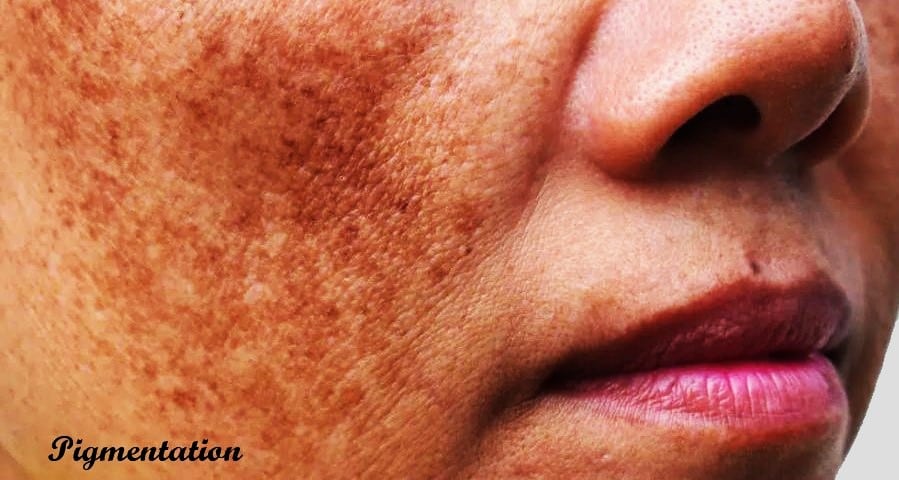Pigmentation can be a stubborn skin concern. Whether it’s those brown spots from years of sun exposure or patches of discoloration left behind from acne, it can linger and be difficult to treat. However, you can definitely relax, it’s anything but a waste of time. There are effective methods that can help you vanish it from your face—permanently! Ready to uncover the secrets? Let’s dive into the causes, treatments, and prevention tips that will help you achieve a clearer, more radiant complexion.
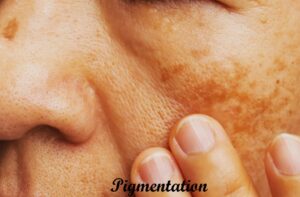
What is Pigmentation?
Before we talk solutions, let’s first understand what it is. Pigmentation alludes to the shading of the skin. It occurs when your body produces either too much or too little melanin, the pigment that gives your skin its color. The result? Patches of skin that look darker or lighter than your normal tone.
It can appear on the face in various forms, and while some are temporary, others can last much longer without intervention.
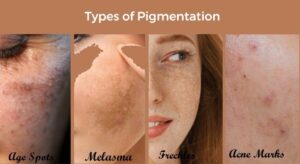
Common Types of Pigmentation
Different types of pigmentation require different treatments, so it’s important to know what you’re dealing with. Here are the most common ones:
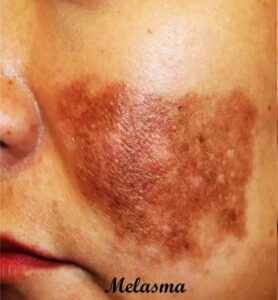
Melasma
Melasma is a form of hyperpigmentation that often appears as large, dark patches on the face. It is commonly linked to hormonal changes and is more prevalent in women, especially during pregnancy or while using birth control.
Sunspots
Also known as solar lentigines, sunspots occur after long-term sun exposure. They’re flat, brown spots that tend to show up on the parts of your face that get the most sun, like the forehead and cheeks.
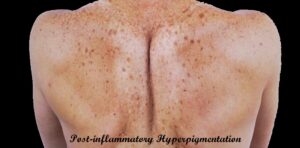
Post-inflammatory Hyperpigmentation (PIH)
This type of pigmentation often appears after skin trauma, such as acne, burns, or injuries. PIH usually shows up as dark marks and can fade over time, but may need a little help to disappear completely.
Causes of Pigmentation
Knowing what triggers pigmentation can help you take preventive steps. The most common culprits include:
Sun Exposure
Too much fun in the sun can lead to an excess production of melanin, which in turn, can result in pigmentation. UV rays damage skin cells, leading to uneven darkening.
Hormonal Changes
Changes in hormones, such as those experienced during pregnancy, menopause, or while taking oral contraceptives, can lead to melasma, one of the most difficult forms of it to treat.
Skin Injuries and Inflammation
Whenever the skin heals from an injury, acne, or a rash, it sometimes leaves behind dark spots. This is known as post-inflammatory hyperpigmentation and can be slow to fade.
How to Remove Pigmentation Permanently: Proven Methods
While some pigmentation may resolve on its own, more stubborn cases require a targeted approach. Here’s a breakdown of the most effective treatments to help you achieve clear skin, for good.
Topical Treatments
Skin medicines are many times the primary line of guard. They work by lightening the dark patches and speeding up cell turnover. Here are the top choices:
Hydroquinone
Hydroquinone is a skin-lightening agent that has been used for decades to treat hyperpigmentation. It works by decreasing the production of melanin and is available in both over-the-counter and prescription forms.
Retinoids
Retinoids, derived from Vitamin A, are excellent for speeding up skin cell turnover, which can help fade it faster. They also help prevent further pigmentation by enhancing the skin’s natural renewal process.
Vitamin C
Vitamin C is a powerhouse antioxidant that not only brightens the skin but also inhibits the enzyme tyrosinase, which is involved in melanin production. Integrating a L-ascorbic acid serum into your skincare routine can have a perceptible effect.
Laser Treatments
For deeper, more stubborn pigmentation, laser treatments can be very effective. Lasers target the melanin in the skin, breaking it down so that your body can naturally eliminate it. Depending on the severity of your pigmentation, you may need multiple sessions for best results.
Chemical Peels
Chemical peels work by exfoliating the top layer of skin, helping to fade dark spots over time. Glycolic acid, lactic acid, and salicylic acid are commonly used in peels to treat hyperpigmentation.
Microdermabrasion
Microdermabrasion uses fine crystals or a diamond-tipped wand to gently buff away the outer layer of the skin. This procedure can help lighten it, though it may require multiple treatments for permanent results.
Natural Remedies for Pigmentation Removal
Prefer a more natural route? Some ingredients found right in your kitchen can also help in your battle against it.
Aloe Vera
Aloe vera has compounds that inhibit melanin production. Applying fresh aloe vera gel to pigmented areas can gradually lighten them with consistent use.
Green Tea Extract
Green tea is packed with antioxidants that can help reduce pigmentation. It works by inhibiting the tyrosinase enzyme, similar to Vitamin C, thus reducing melanin production.
Apple Cider Vinegar
Apple cider vinegar contains acetic acid, which has mild bleaching properties. Applying a diluted solution of apple civinegarder can help fade pigmentation over time.
Prevention: Keeping Pigmentation at Bay
Once you’ve cleared your pigmentation, you’ll want to keep it from coming back. Prevention is key, and here’s how you can maintain your results:
Sunscreen is Your Best Friend
The best way to prevent it from returning is to religiously apply sunscreen. Choose a broad-spectrum SPF 30 or higher, and apply it every day—even if it’s cloudy!
Maintaining a Healthy Skin Care Routine
A consistent skincare routine, including gentle exfoliation and hydration, can help maintain the even tone you’ve worked so hard to achieve. Incorporating products like Vitamin C or retinoids can also help prevent future pigmentation.
Final Thoughts
It can be frustrating, but with the right approach, it doesn’t have to be permanent. From potent topical treatments to in-office procedures and natural remedies, you have options to banish those pesky spots for good. Just remember, patience is key, and consistency is crucial. With time, effort, and a solid prevention plan in place, your clear skin is within reach.
FAQs
- Can it come back after treatment?
Yes, it can return, especially if you don’t protect your skin from the sun. Always use sunscreen to prevent reoccurrence. - How long does it take to see results from its treatments?
It depends on the method. Topical treatments may take a few months, while laser treatments can show results after a few sessions. - Are natural remedies as effective as medical treatments?
Natural remedies can work for mild pigmentation, but they may not be as fast or effective as clinical treatments for more severe cases. - Can it be treated at home?
Yes, many mild cases of pigmentation can be improved with over-the-counter products or natural remedies. - What’s the best treatment for melasma?
Melasma can be tough to treat, but a combination of topical treatments like hydroquinone and professional procedures like chemical peels or lasers often work best.
